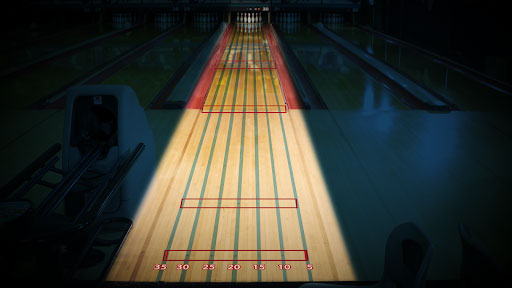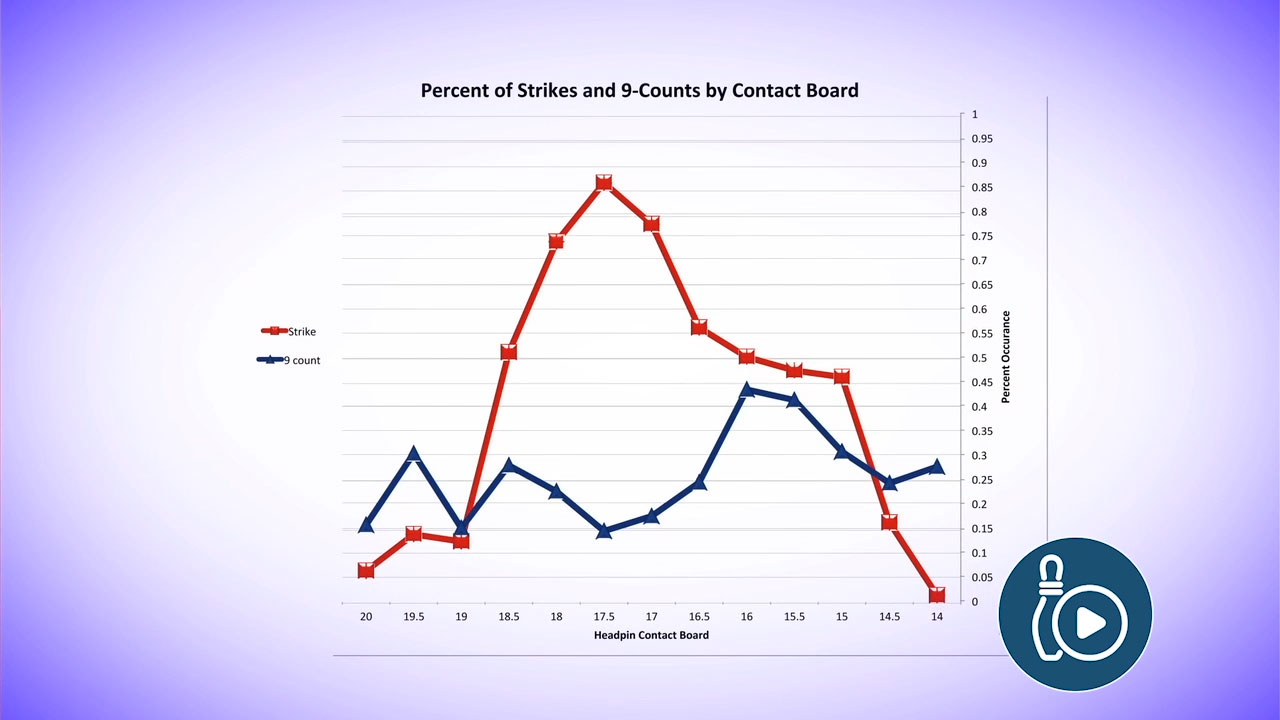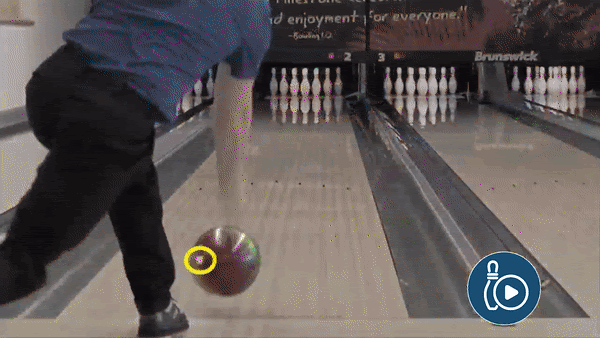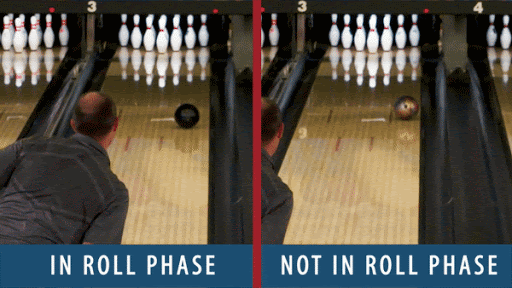Each pin is laid down onto a board that extends the length of the lane and approach.

In fact, the 1 and 3 pins range from 15 to 18 boards.
The USBC Equipment Specifications department has run studies over the years about the bowling ball’s entry angle into the pocket.
It concluded that most bowlers achieve between 3° to 4° of entry angle into the pocket, while the sport’s elite can achieve as high as 6°.
But is more really better?
Well, yes and no.
Results
The USBC did another study titled “I Left What Where?” and found that regardless of entry angle, the board you hit the pocket on determines whether you’ll strike, leave a single pin, or get multi-pin spares. When your ball enters at the 17.5 board, you will either strike or leave a single-pin spare, regardless of entry angle. The study revealed that 85% of the time you will strike when entering the pocket at the 17.5 board, and 15% of the time you’ll leave a single-pin spare.
The study revealed that 85% of the time you will strike when entering the pocket at the 17.5 board, and 15% of the time you’ll leave a single-pin spare.
At the 17 to 18 boards, you will either strike or leave a single-pin spare 70–85% of the time.
When you are lighter in the pocket with your ball entering at the 15 to 16.5 boards, you will strike or leave a single-pin spare 50% of the time.
When you are high in the pocket at the 18.5 board, you will strike or leave a single-pin 50% of the time. If you can control the pocket and enter somewhere between the 16 to 18 boards, more than likely you’re going to strike or leave something you can make, resulting in improved scores.
Matching Up
Bowling ball motion is made up of three phases: skid, hook, and roll.
In order to match up to the lane conditions, you need to have the ball speed match up to how fast the ball is spinning or axis rotation.
All RPMs are not created equal because of a bowler’s axis tilt. Someone with 300 RPMs and a higher tilt will rotate faster than someone with 300 RPMs and lower axis tilt.
When the ball exits your hand, your ball is at its fastest speed. As it travels 60 feet to the pins, it loses speed.
However, the bowling ball gains revolutions when it enters the roll phase, so when it hits the pins, it is spinning at its fastest speed.
Every bowler should post their shot and watch how the ball rolls into the pins. The ball will roll end-over-end and drive into the 1–3 pocket.

If it deflects or drives too hard, you can end up with corner pins or worse.

But watching the roll phase tells you the bulk of the story. How and where it hits the pins lets you know if you are matched up or if you need to adjust.
Thank you so much this is very helpful video
I liked the vedio it was helpful
I have a question instead of a comment. I am a senior (79) bowler who like most have lost ball speed over the years. How much does the loss of ball speed play into pin carry when hitting the 1-3 pocket? Thanks